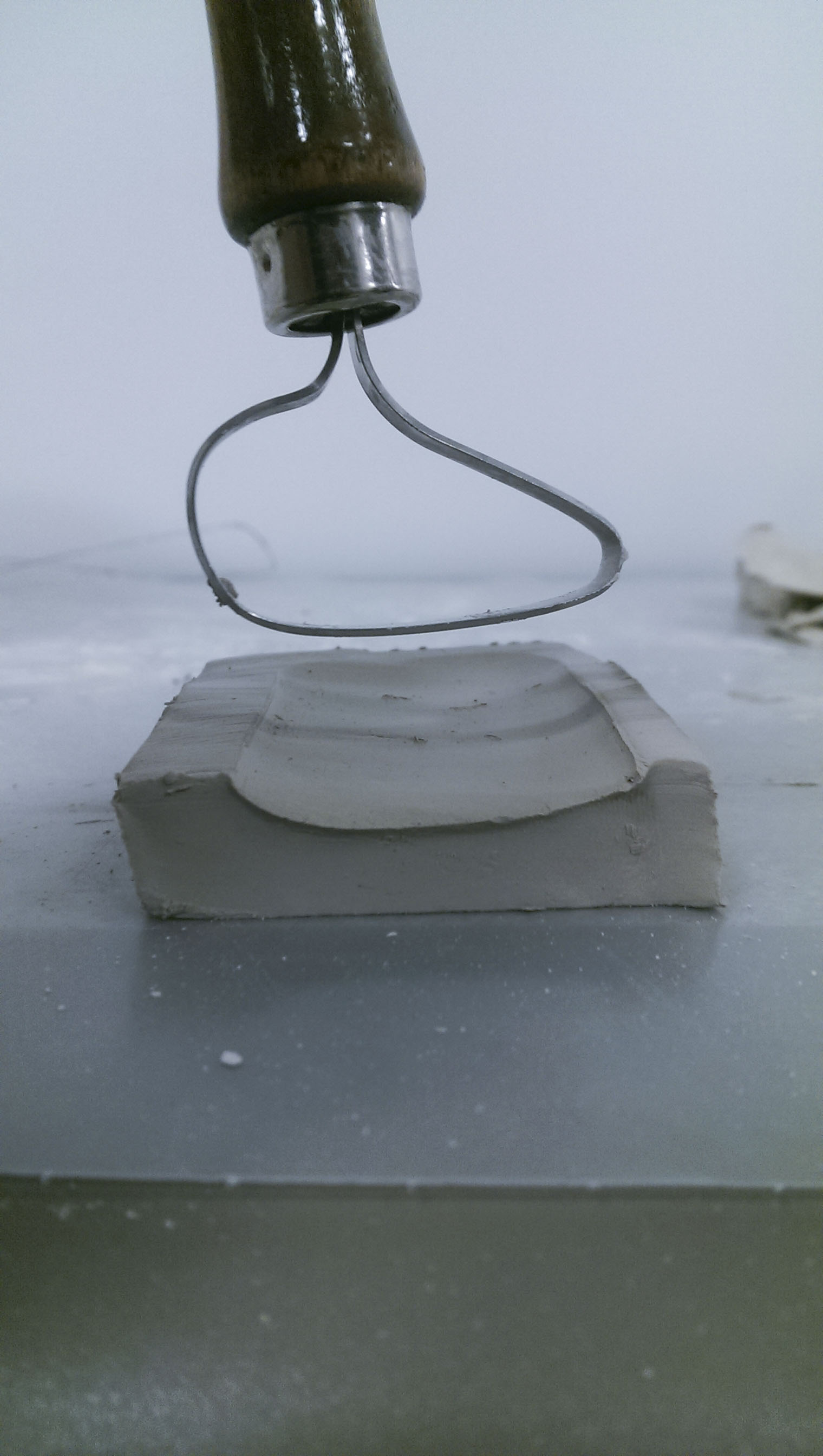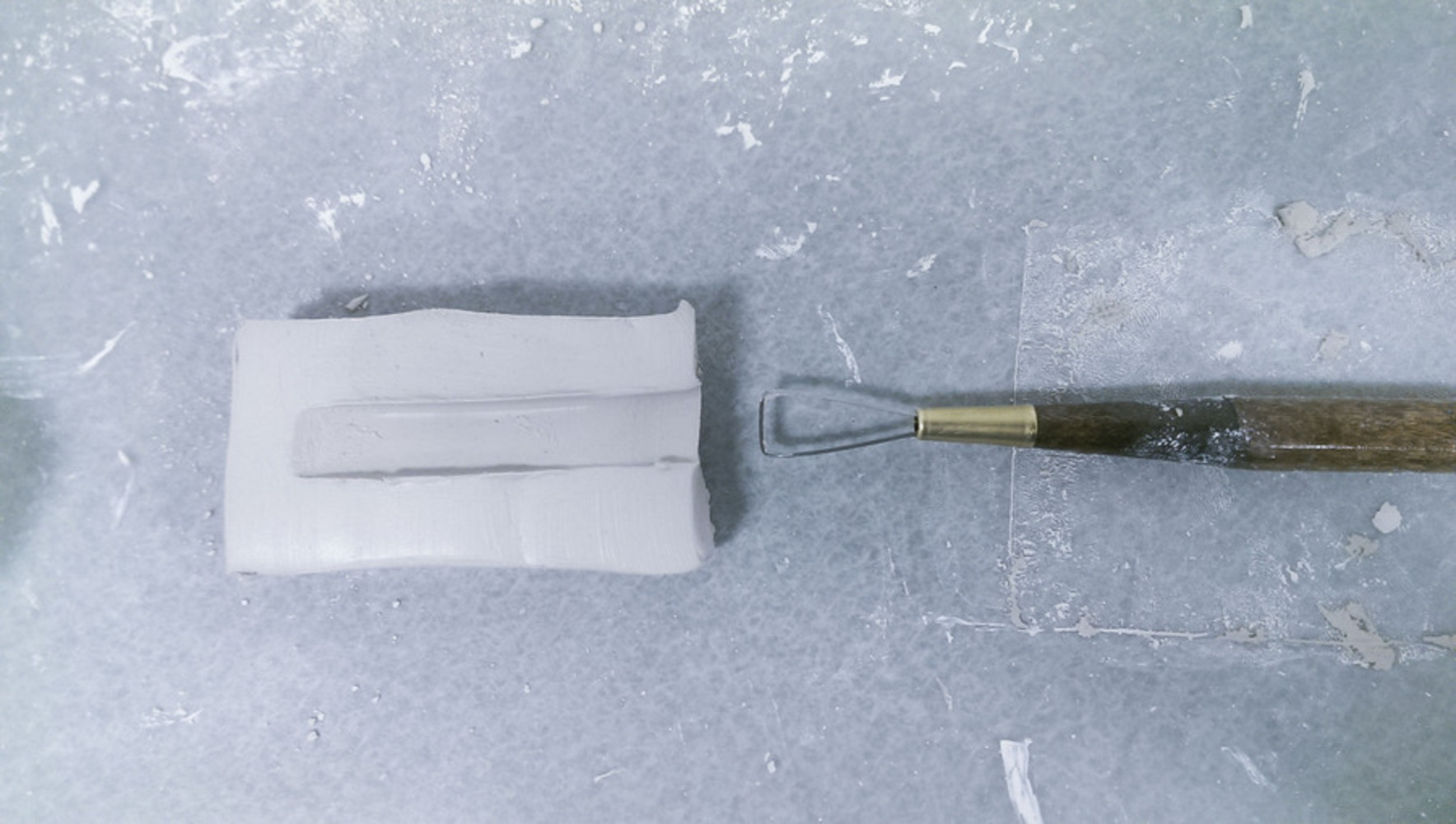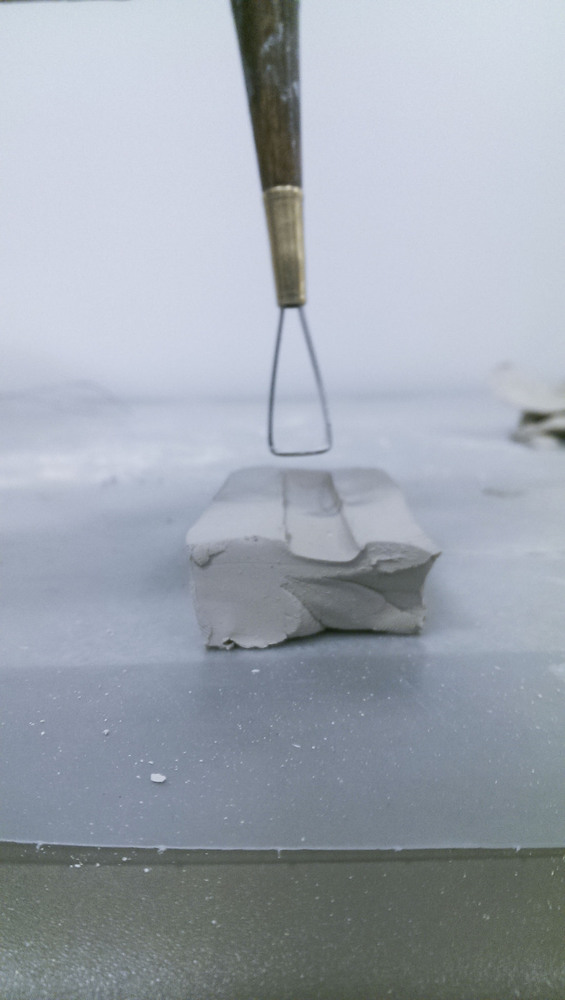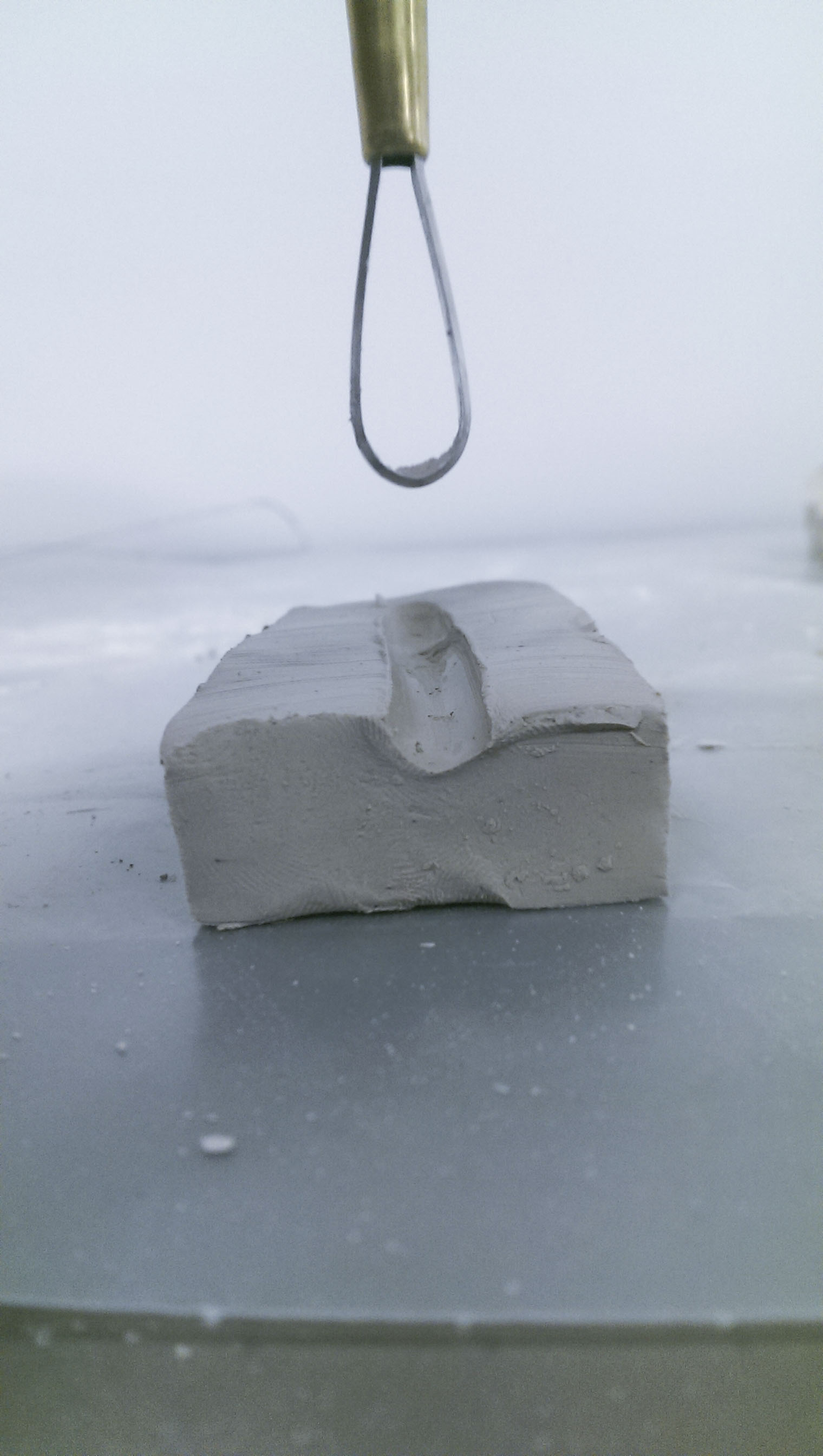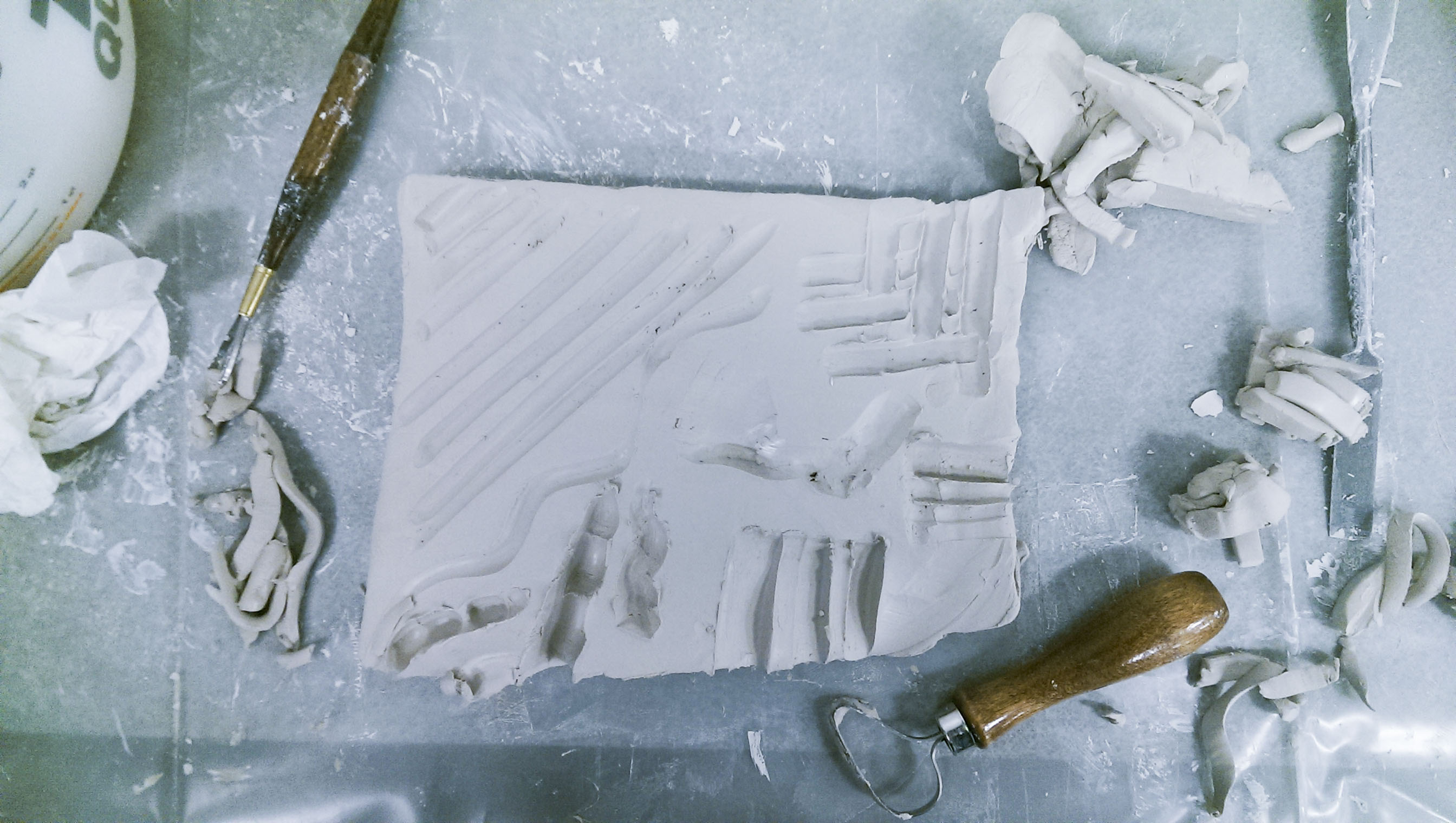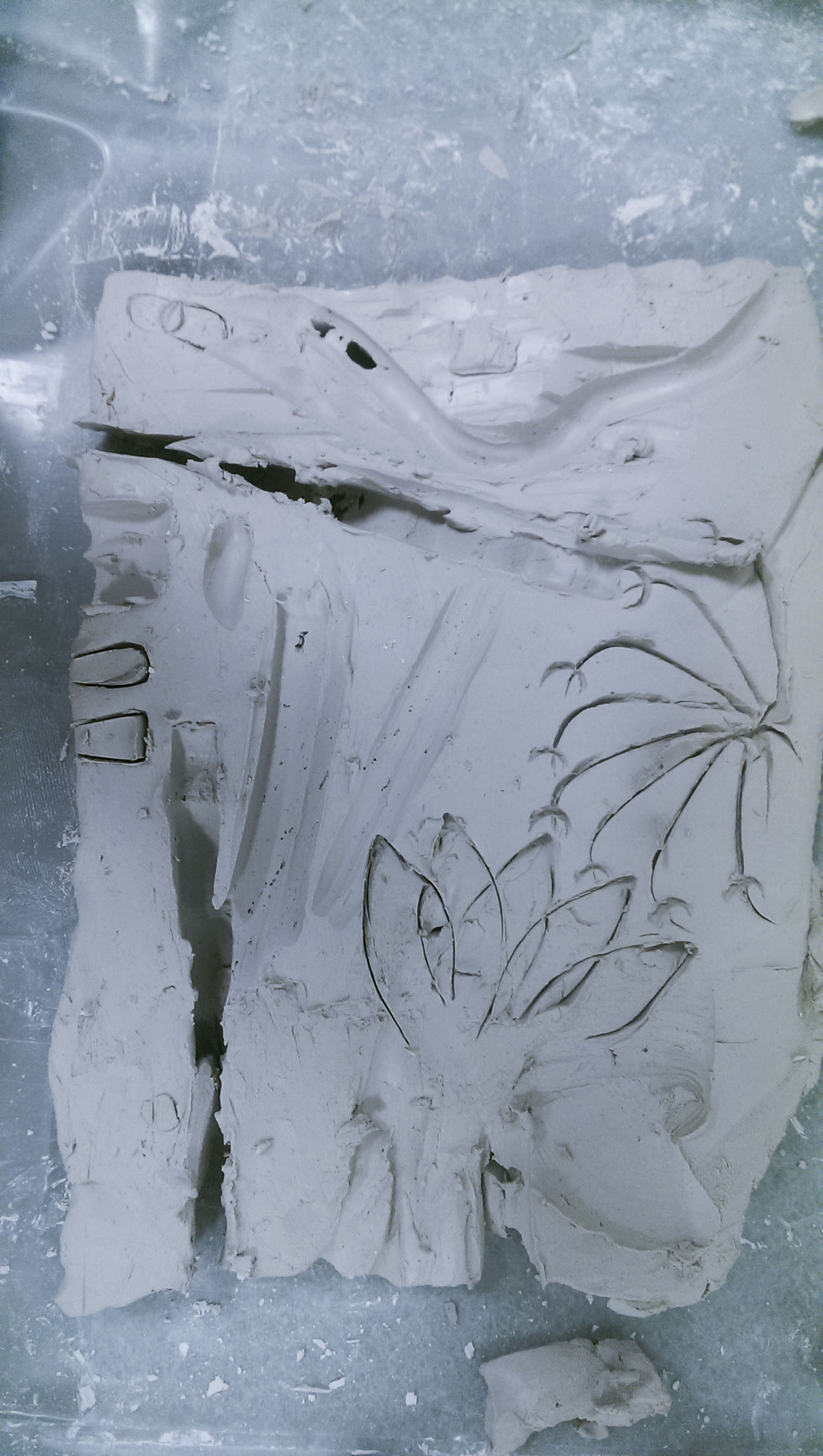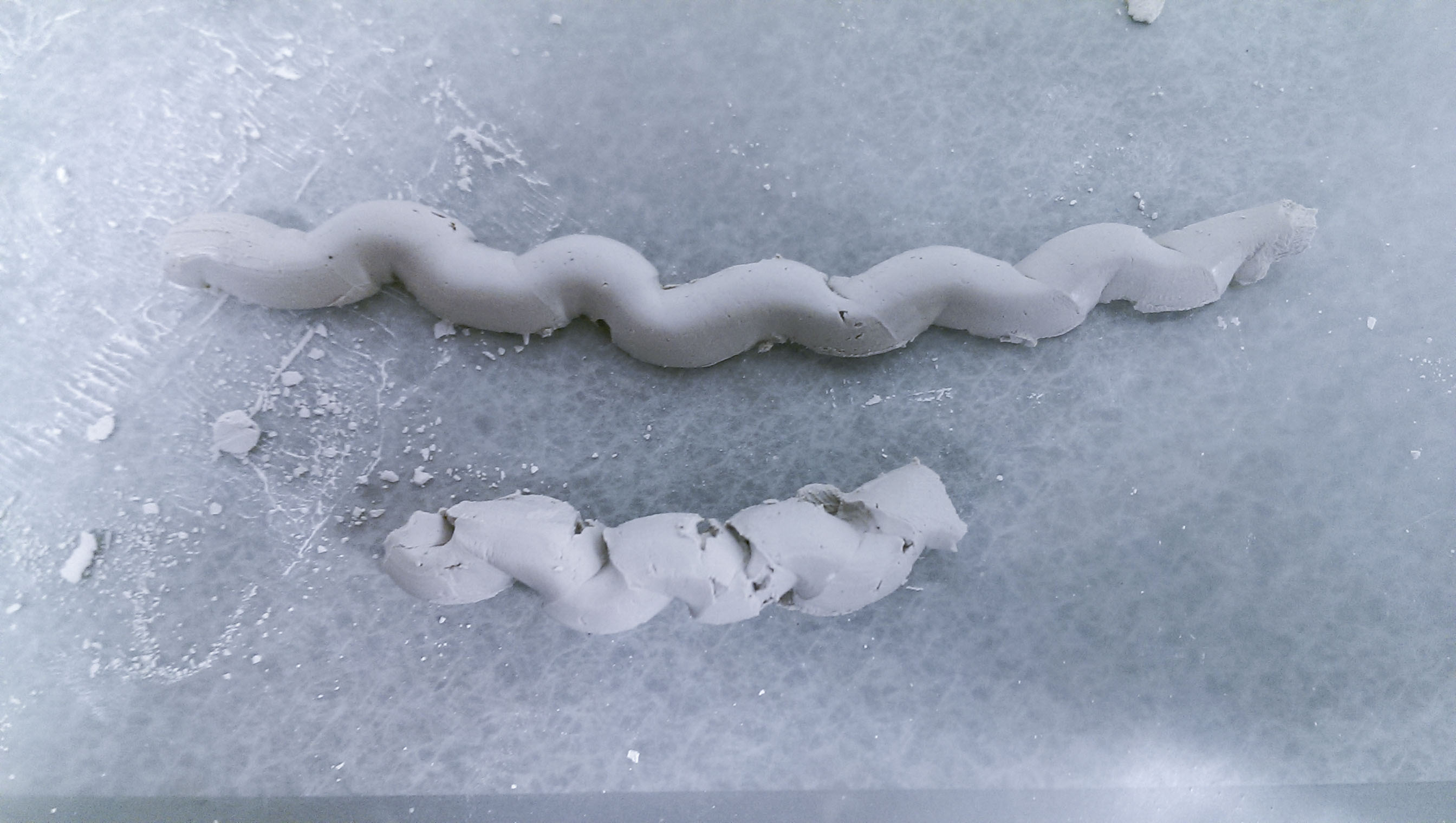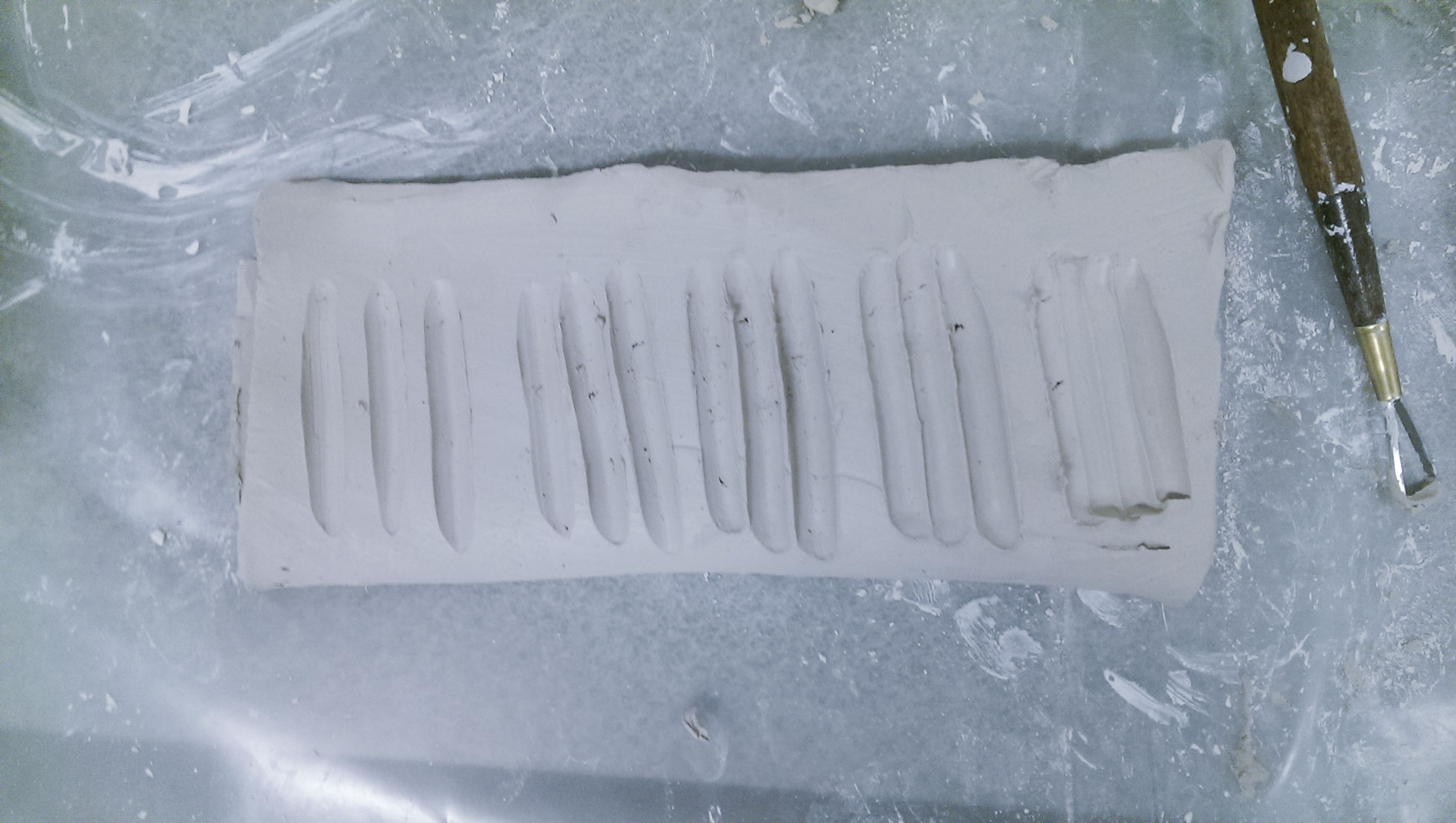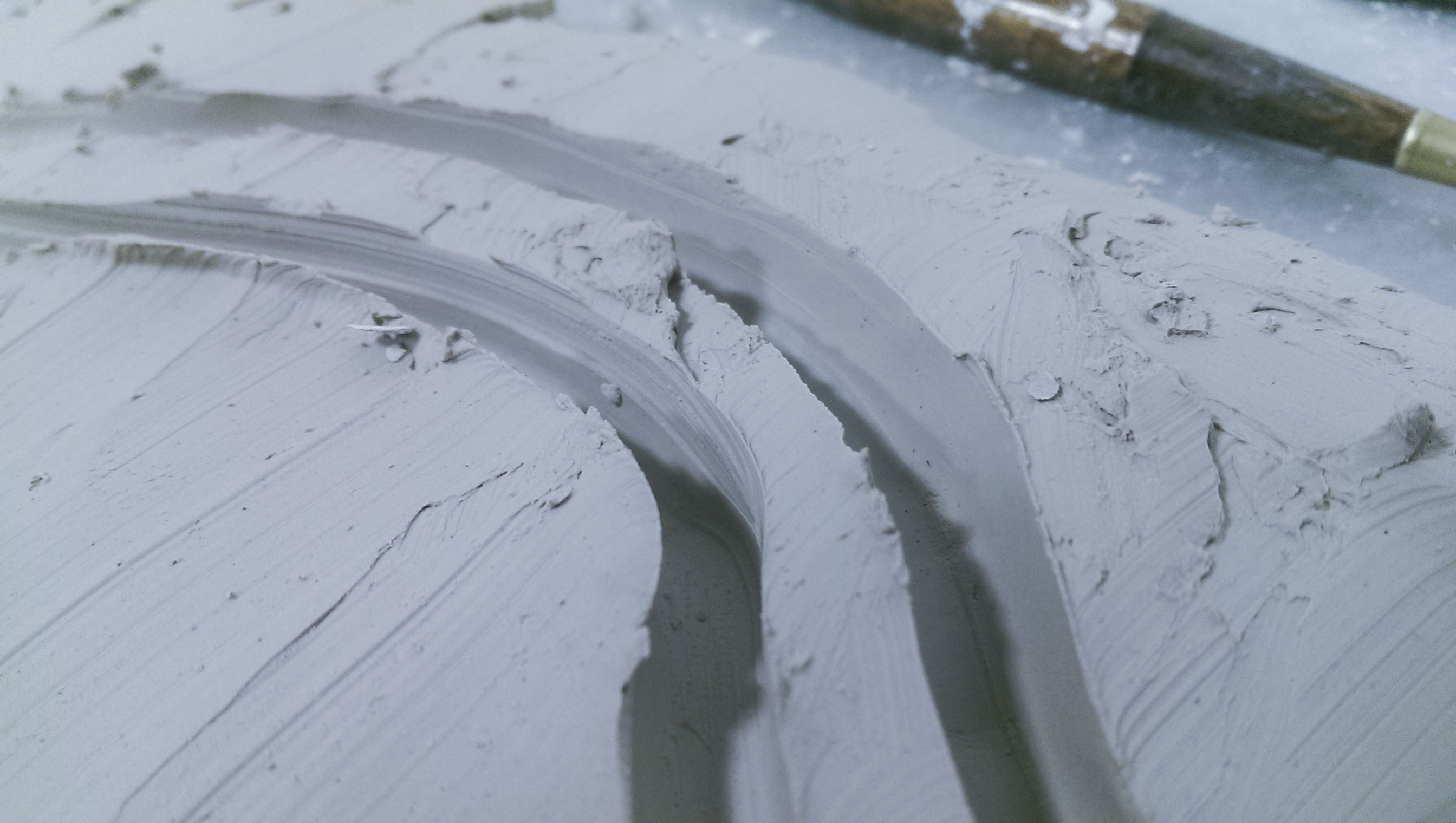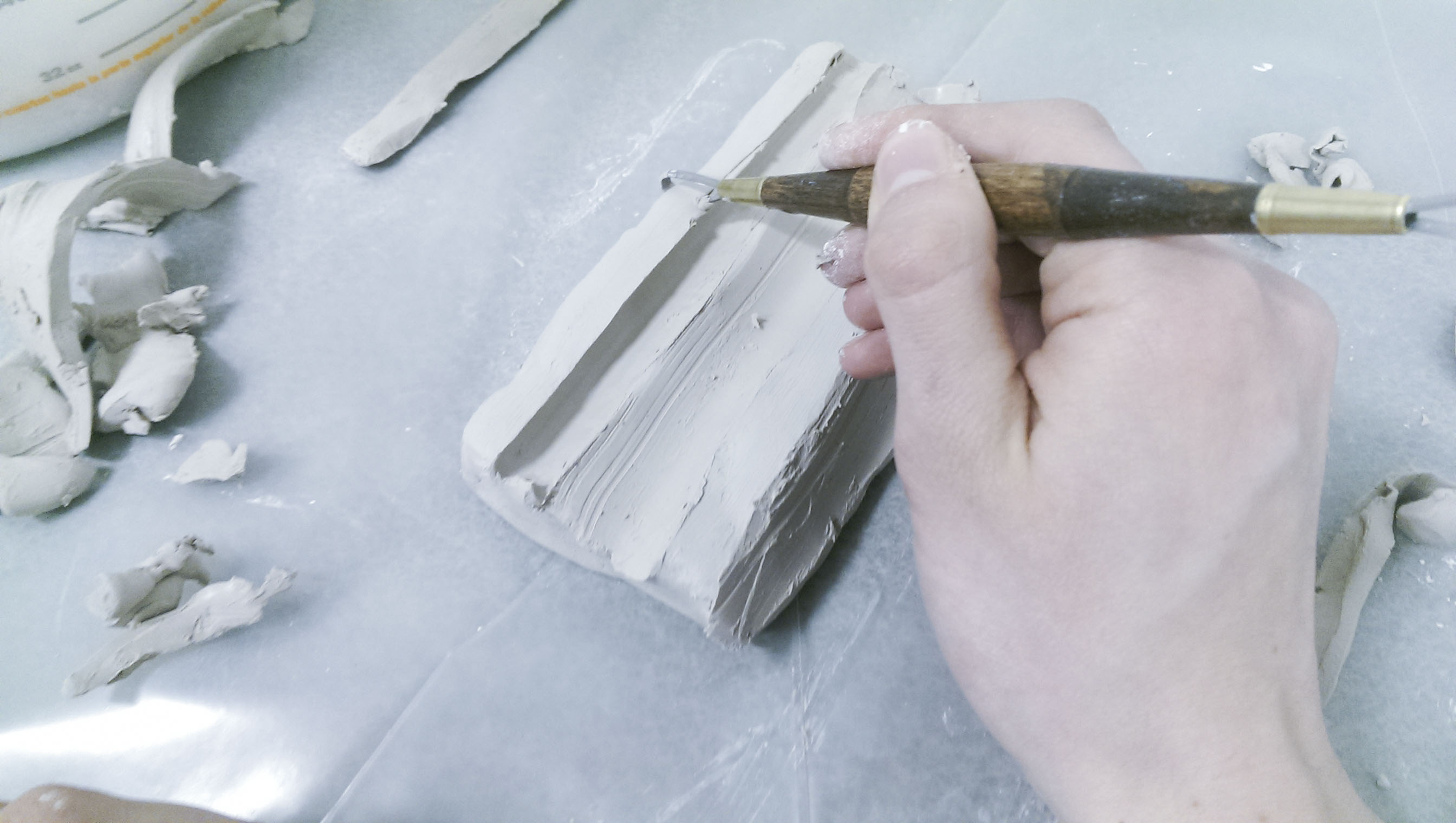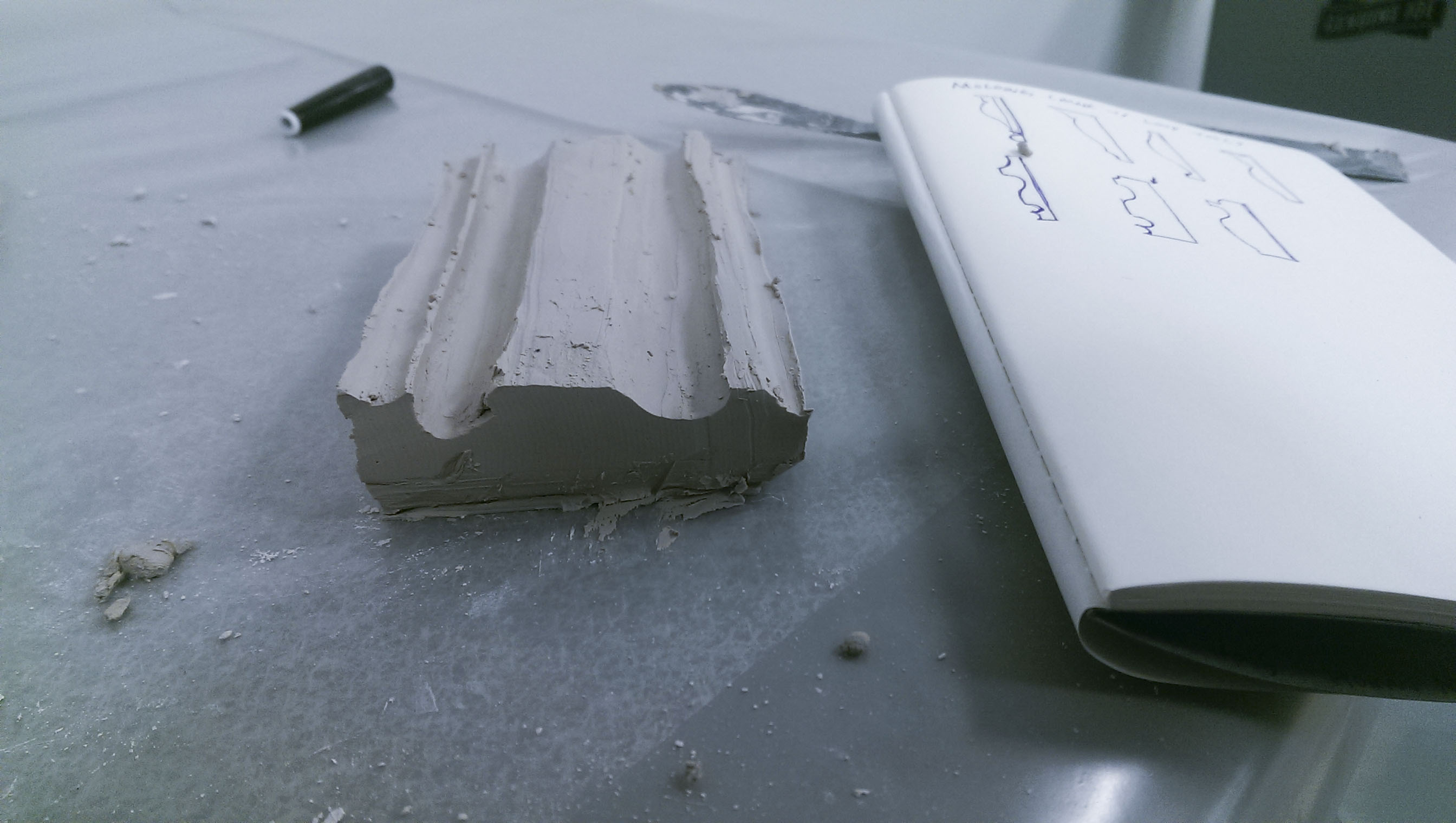Outcome
We made various test cuts using the tools with different hand motions and positions on a large block of clay. The tests included using the tool at various angles. We tried various sweeping motions, straight cuts, and changes in cutting depth. Also tested was how different cuts interact with one another. The loop tools can create an huge variety of cuts, making them great tool for removing clay for shaping and finishing. The cuts created on the clay we had would create walls that bulged outward along the cut. The clay also lacked consistency in hardness and would cause inconsistency in the cuts. Accuracy of the tool is mostly dependent on the user's dexterity and mastery of the tool.
We continued to use the tools in other ways. We explored cutting straight down, using the tool to create patterns and how the tool worked when cutting at increasing depth. We found that we can create very interesting patterns. We also found that the tool has a limited cutting depth, since it is wider on the bottom than the top, making it difficult to remove material from deep cuts.
You can upload files of up to 20MB using this form.
